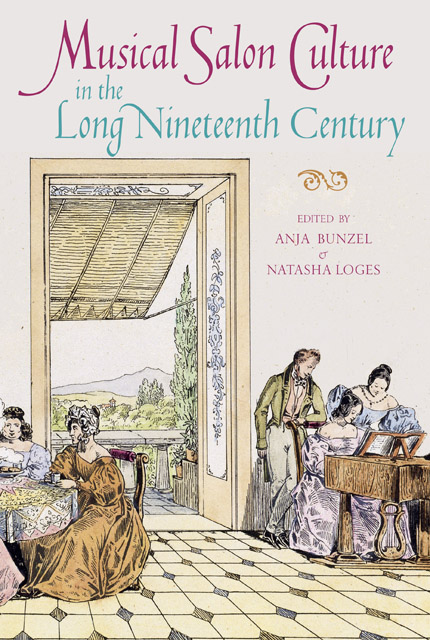8 - The Instruments of the Vienna Biedermeier Salon: Diversity in Design, Sound and Technology
Published online by Cambridge University Press: 17 January 2023
Summary
In early nineteenth-century Vienna, as elsewhere, the salon was a significant locus of communication. Especially in middle-class homes, salons were fitted out with stylish furnishings and modern musical instruments, and the furniture and its quality were a point of conversation. Thus, the prominent German writer Christian Wilhelm Müller (1752–1831) recorded his impression of Viennese salons, notably that of the Geymüller family, on 26 October 1820 as follows: ‘It is unbelievable how far the enjoyment of music is taken, particularly accomplishment on the fortepiano. In every home, there is a good instrument. At the banker Gaimüller’s, we found five by different master-builders.’
Musical instruments were indispensable to the salon; above all, it is impossible to conceive of the salon without keyboard instruments in their various forms. Instruments designed for the Biedermeier salon were generally highly attractive. In Vienna, piano legs with Egyptian-style caryatids, gilded rails ornamented with acanthus-leaf figures, mythological characters and symbols, and finely decorated transoms and front boards dominated. The market for fortepianos with these detailed designs, and lavish, occasionally highly exotic customisations, ebbed around 1850 with the decisive shift towards industrial piano manufacture and its associated standardisation of piano sound.
The vast demand for fortepianos inspired renowned instrument-makers to devote their energies to their development and modernisation. Initially, firms manufactured pyramid pianos, cabinet pianos and giraffe pianos, which were easily integrated into salons because of their modest size and attractive designs, despite being initially neither sonically nor structurally convincing. The earliest pyramid pianos already existed by the middle of the eighteenth century, built by Christian Ernst Friederici (1709–80). He constructed a vertical double escapement action, placed the strings perpendicular to it, and arranged them diagonally to the right from the performer’s perspective. In this way, the longest strings on the tuning board were ideally placed over the corresponding keys in the bass, but led to a point within the casing, giving the instrument the shape of a stylised pyramid. It seems that Joseph Wachtl (active 1801–32) was the first Vienna-based instrument-maker who produced an improved pyramid piano in 1804, which was followed soon after by upright square pianos, as confirmed by his colleague Jakob F. Bleyer (1778–1812). These compact pianos were a runaway success, so that Wachtl and Bleyer brought (no less than) five different types of upright pianos and two types of square pianos onto the market.
- Type
- Chapter
- Information
- Musical Salon Culture in the Long Nineteenth Century , pp. 123 - 138Publisher: Boydell & BrewerPrint publication year: 2019

